AP Art History Indigenous Americas
1/22
There's no tags or description
Looks like no tags are added yet.
Name | Mastery | Learn | Test | Matching | Spaced |
|---|
No study sessions yet.
23 Terms
Chavin de Huantar
900-200 BCE
stone (architectural complex); granite (Lanzon and sculpture); hammered gold alloy (jewelry)
Northern highlands, Peru
-located by a jaguar sculpture which was a symbol of power
-hidden entrance to temple led to stone corridors
-hallways were unique because they were maze-like
-site oriented towards rivers
-Lanzon Stela is a blade stone
(Lanzon Stela)

Chavin de Huantar (Relief sculpture)
-known for low relief carvings
-located on ruins of a stairway at Chavin
-shows jaguars in shallow relief
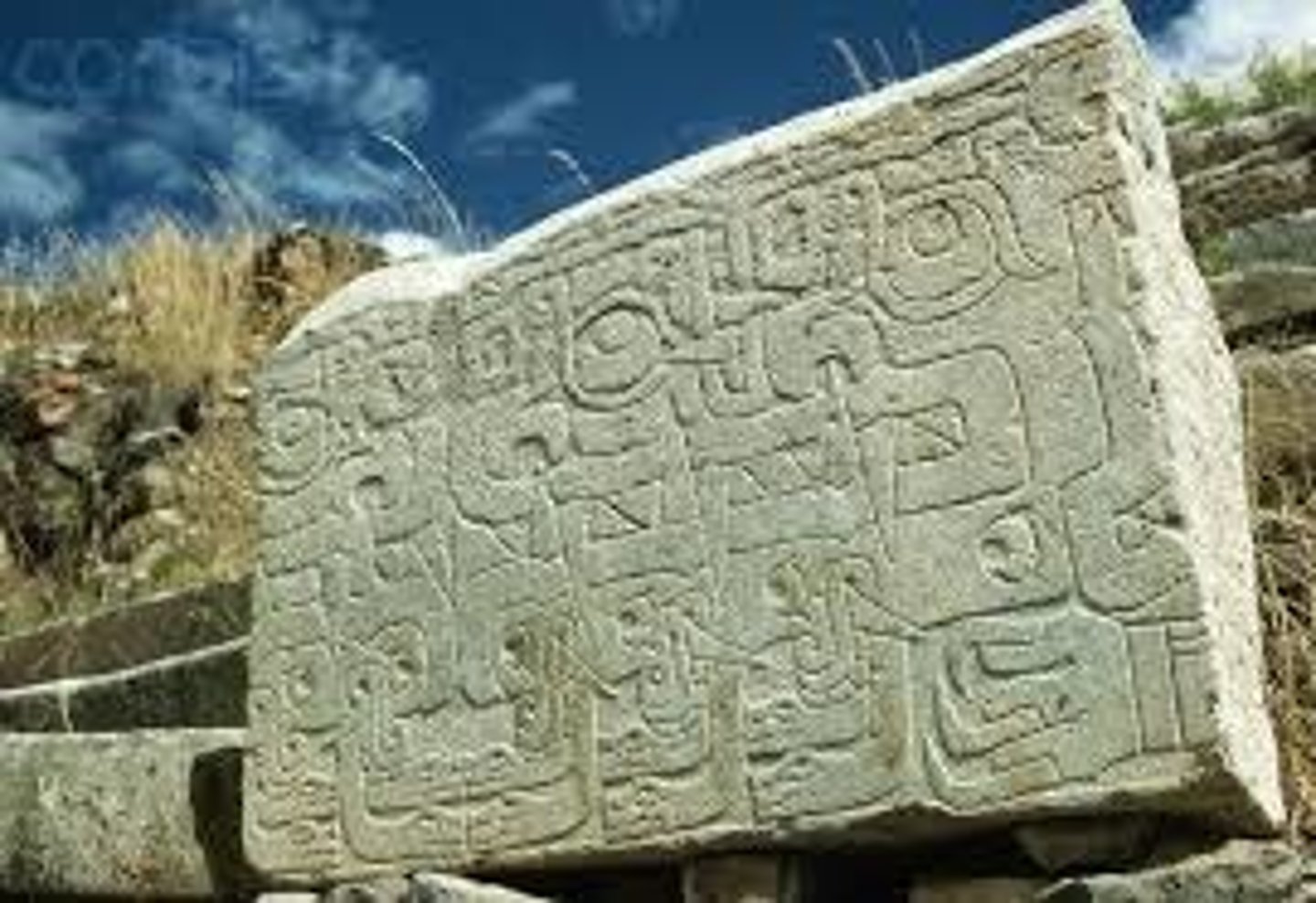
Chavin de Huantar (Nose ornament)
-worn my males and females under nose
-held in place by semi-circular section at top
-two snake heads on both ends
-makes the wearer into a supernatural being during ceremonies

Mesa Verde cliff dwellings
450-1300 CE
sandstone
Montezuma County, Colorado
Ancestral Puebloan (Anasazi)
-pueblo built into sides of cliff which housed 250 people
-functioned well because it was cool, dry, and out of the way
-farming done on plateau above structure
-"Mesa" means "table" while "verde" means "green"
-settlers lived on Mesa Verde for some 200 years
-settlers forced to leave to find water
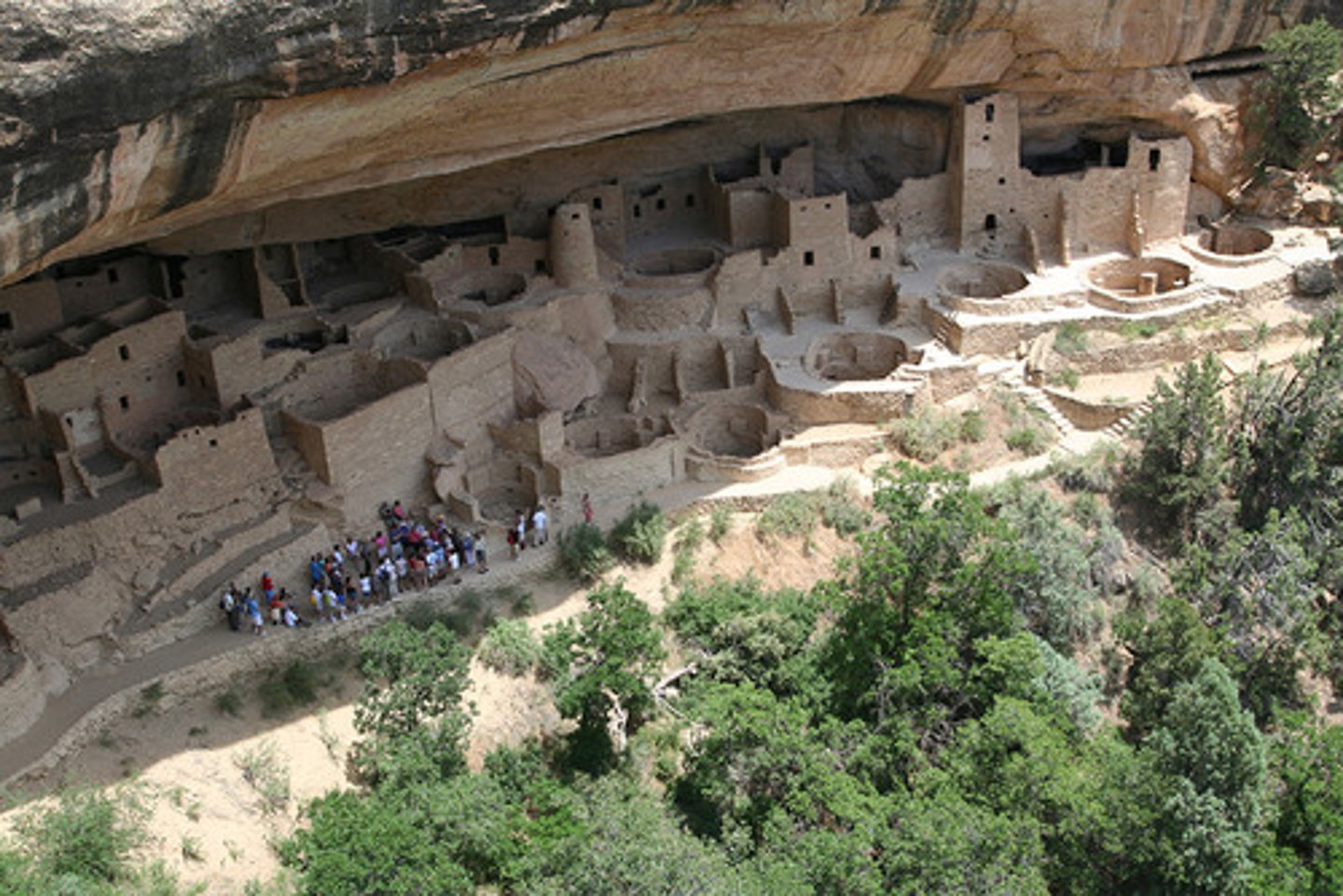
Yaxchilan
725 CE
limestone
Chiapas, Mexico
Maya
-mayan sculpture --> easy to tell because of unusual concept of ideal beauty
-often had a chacmool (half sitting half laying down figure, head turned 90 degrees)
-dedicated to Lady Xoc
(Structure 40)
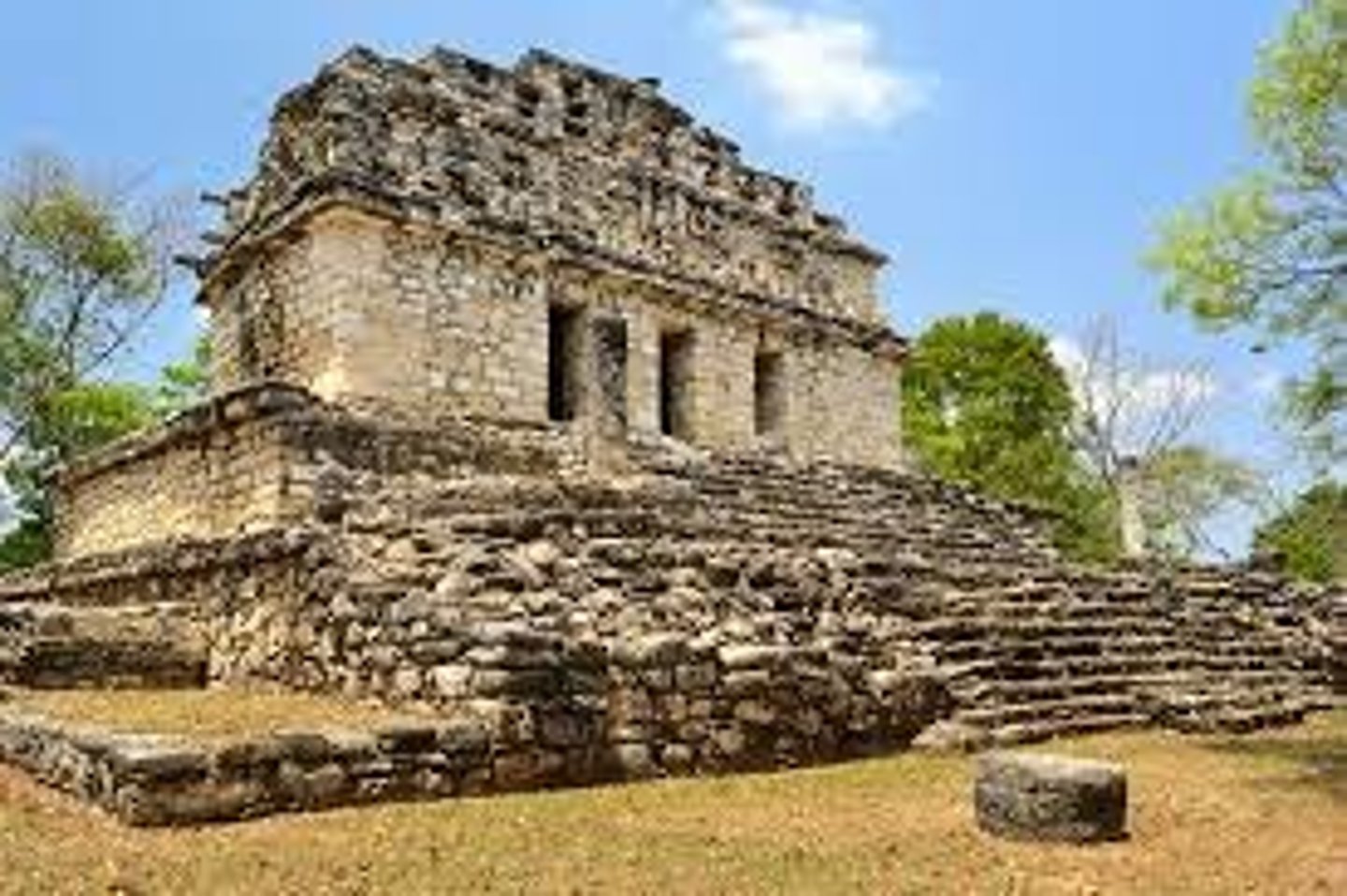
Structure 33
-restored temple structure
-remains of roof comb with perforations
-three central doorways lead to a large single room
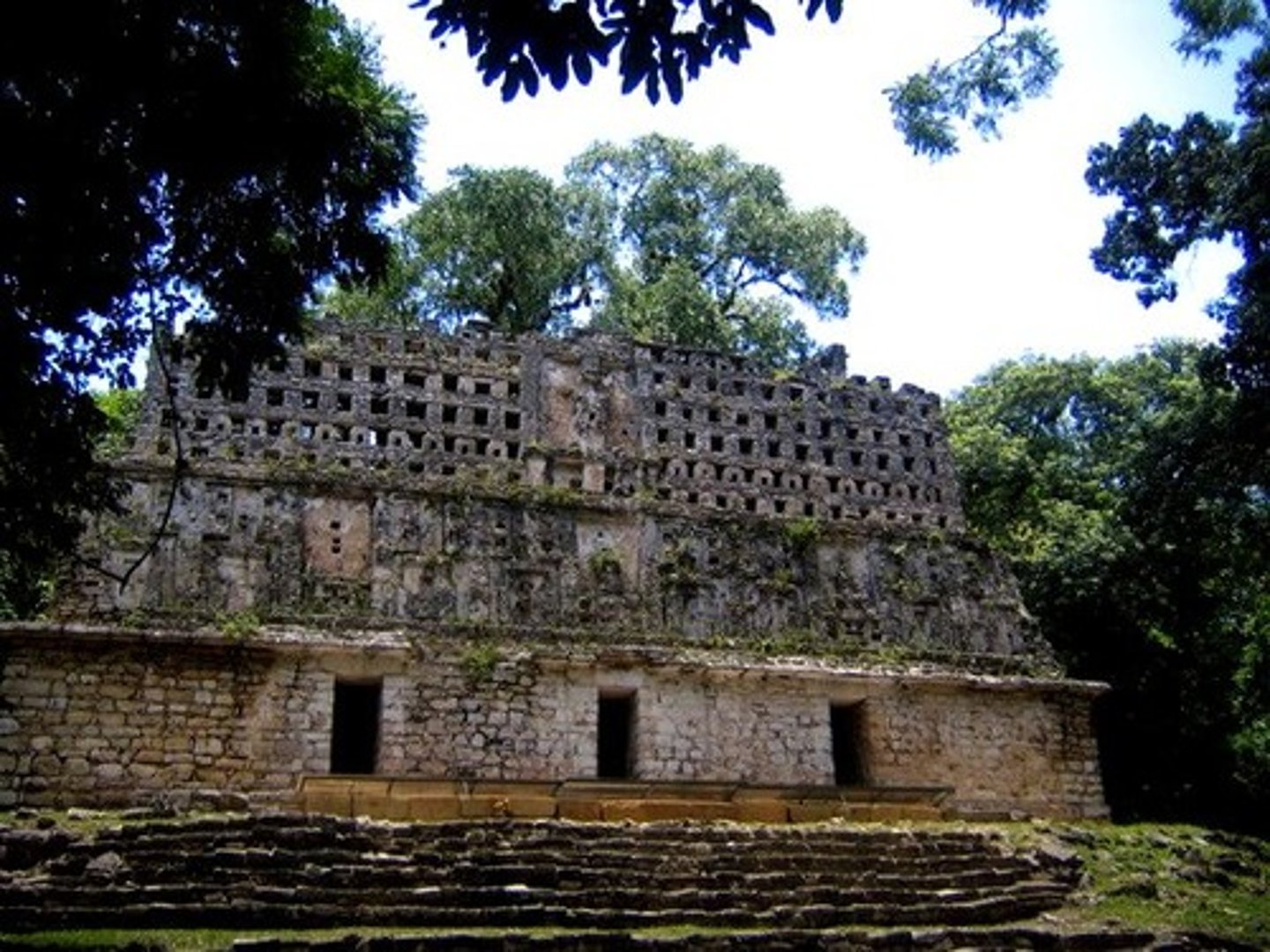
Lintel 25, Structure 23
-originally set above doorway to structure 23, dedicated to Lady Zoc who on the bottom right is invoking the Vision Serpent to commemorate her husband's rise to the throne
-inscription written as a mirror image was unusual, maybe because she was all-knowing

Giant Serpent Mound
c. 1070 CE
earthwork/effigy mound
Adams County, southern Ohio
-largest serpent monument in world
-related to astrology --> head is summer solstice and the tail is the winter solstice
-snakes associated with crop fertility
-no burials or temples associated with this bound
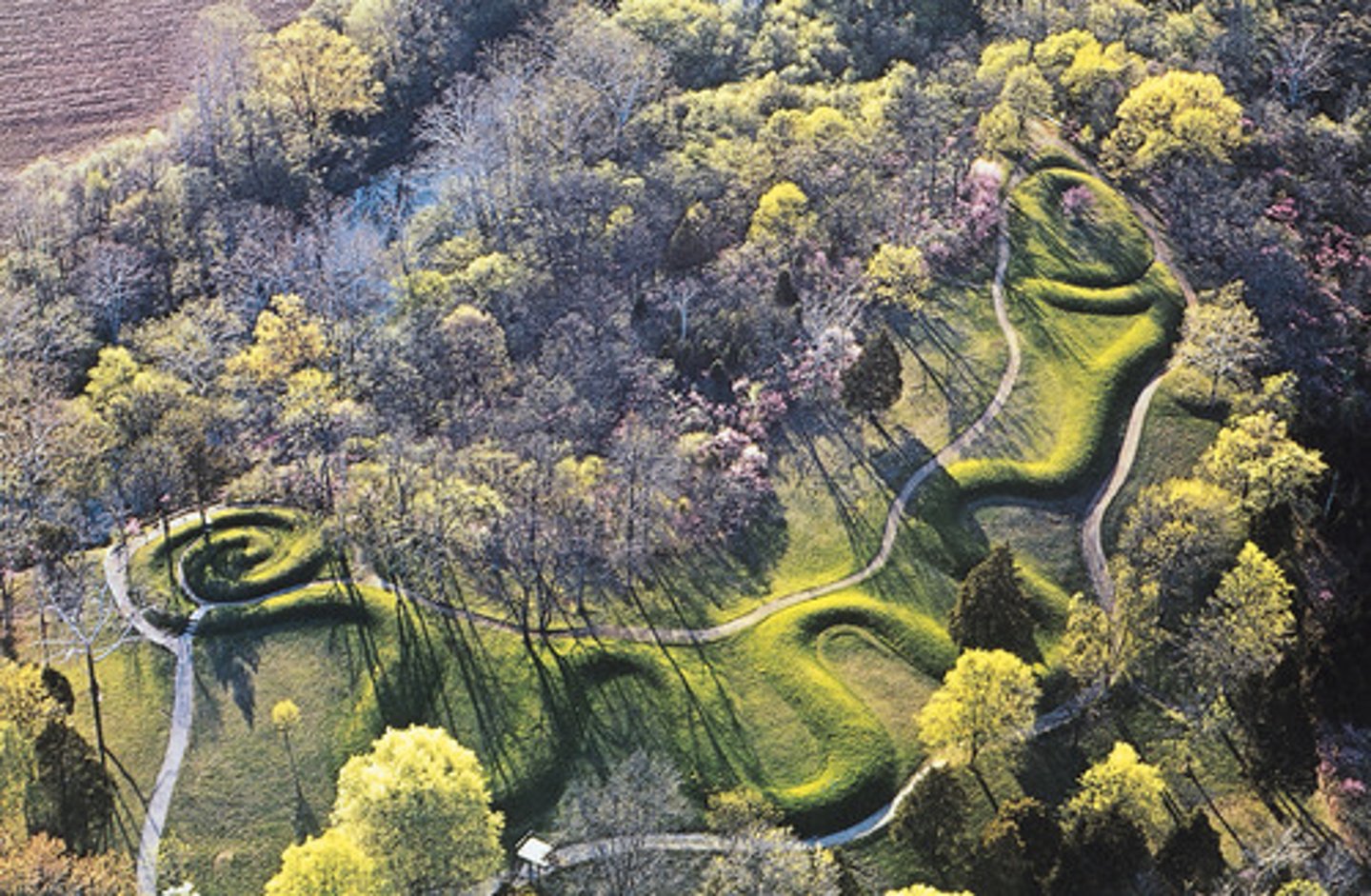
Templo Mayor (Main Temple)
1375-1520 CE
stone
Tenochtitlan
Mexico City, Mexico
-Tenochtitlan city seen as the center of the world
-two temples on top of pyramid each with separate staircase
-North --> dedicated to Tlaloc (god of rain)
-South --> dedicated to Huitzilopochtli (god of sun)
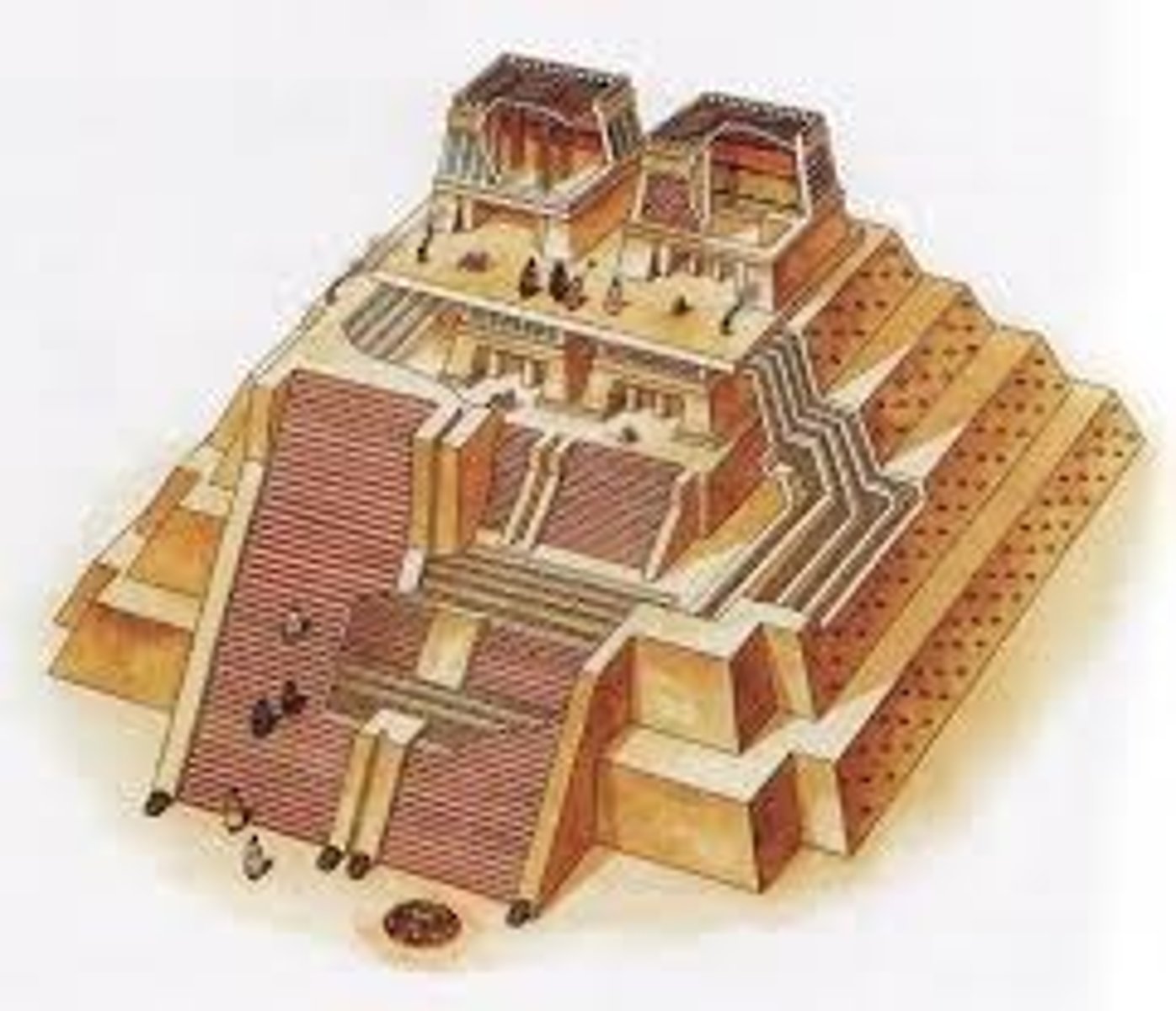
Coyolxauhqui Monolith Stone
-made of volcanic stone
-wearing bells as earrings
-circular relief sculpture
-represents dismembered mood goddess who is placed at the base of the twin pyramids of Tenochtitlan
-Coyolxauhqui and her many brothers plotted the death of her mother Coatlicue
-when Coyolxauqui chopped her mother's head off, a child popped out of the severed body full growth
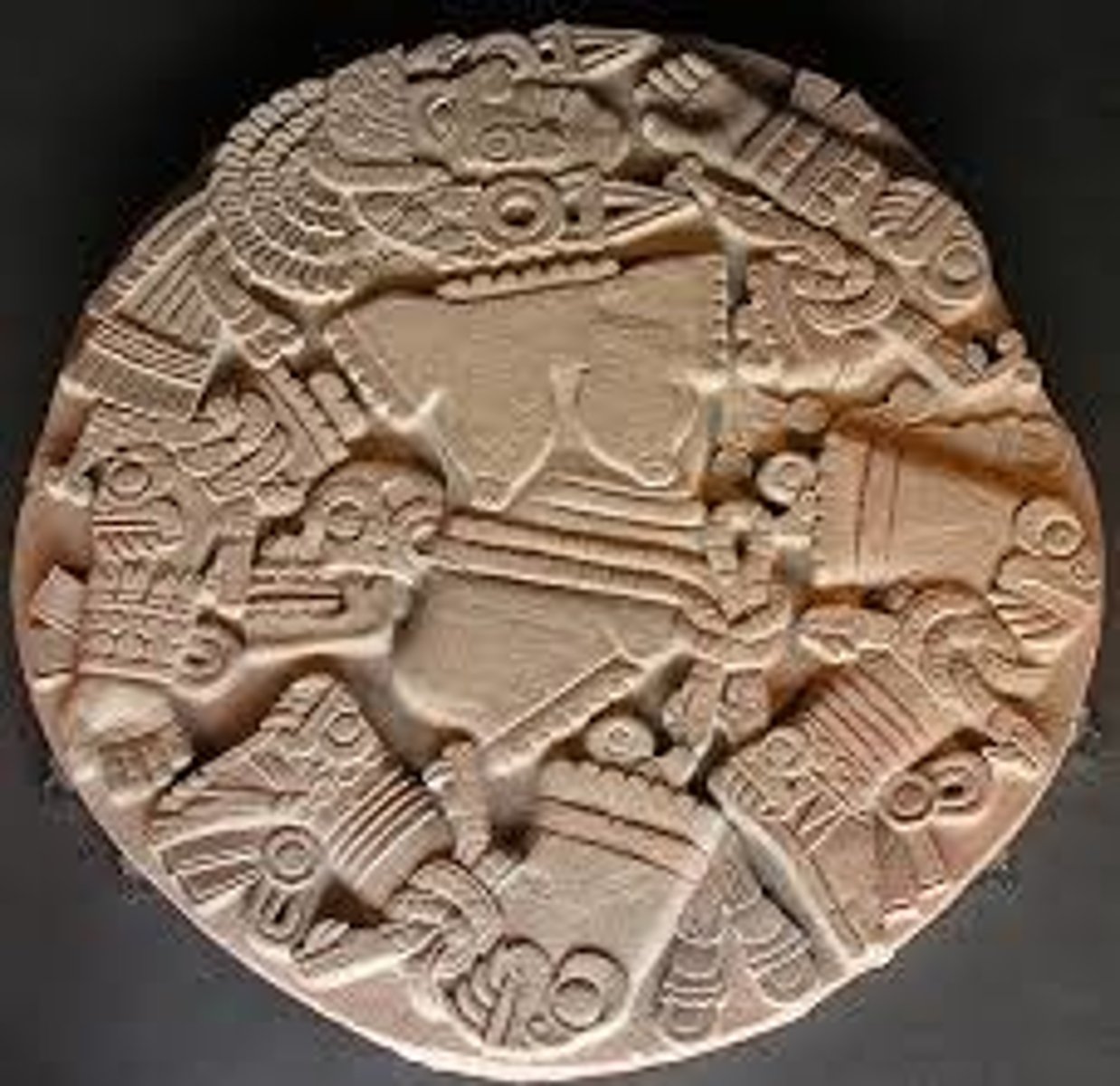
Olmec-style mask
1200-400 BCE (found in Aztec Templo Mayor buried as an offering in 1470 CE)
-made of jadeite
-Olmec works have a characteristic frown on face; pugnacious visage; heavy lidded eyes
-shows that Aztecs embraced art works from other cultures
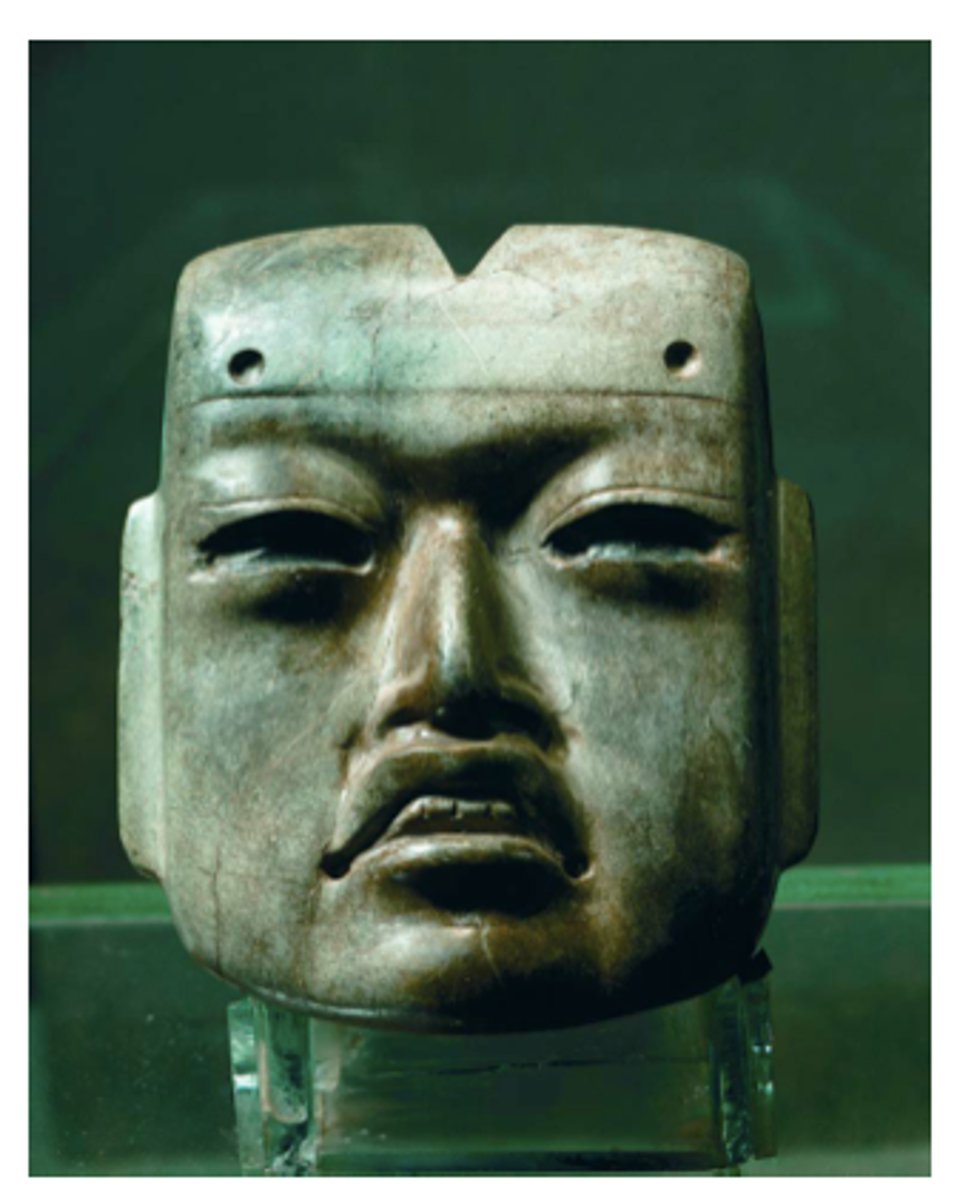
Calendar Stone
-made of basalt
-circular shape reflects cyclic nature of time
-Aztecs felt they needed to feed the Sun god human hearts and blood regularly
-used the stone as an altar to murder victims
-arrows represent cardinal directions

Ruler's feather headdress
1428-1520 CE
feathers and gold
Mexica (Aztec)
-sent by Cortes to Charles V in Spain
-more than 450 male quetzal tail feathers
-part of a costume
-pure gold ornaments
-worn my rulers
-headdress is also called the "Penacho of Moctezuma II"
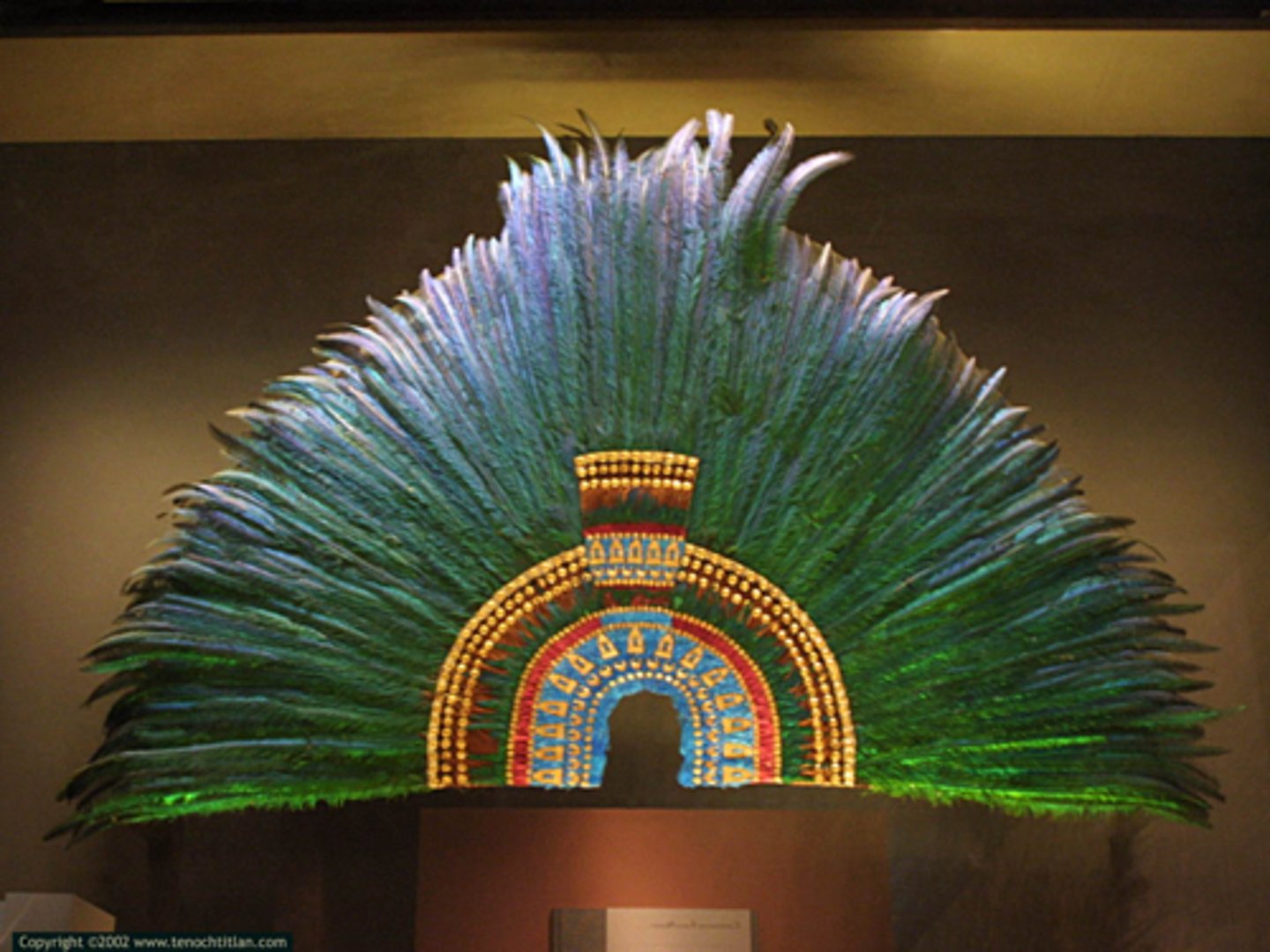
City of Cusco, including Qorikancha (Inka main temple), Santo Domingo (Spanish Colonial convent), and Walls at Saqsa Waman
c. 1440 CE
Andesite
Peru
-capital of Inca empire before Spanish conquest
-city separated into 2 main sections
-there was a church called Santo Domingo which was a Christian church built over Inca temple
-old and new architecture with Spanish Baroque style
-city is shaped like a puma and a symbol of power for the Inca people
Curved Inka wall of Qorikancha with Santo Domingo

Walls at Saqsa Waman
-unknown purpose and function
-built using a labor tax
-located in the City of Cusco
-stones are independently shaped and lock into each other
-no mortar used to link the stones
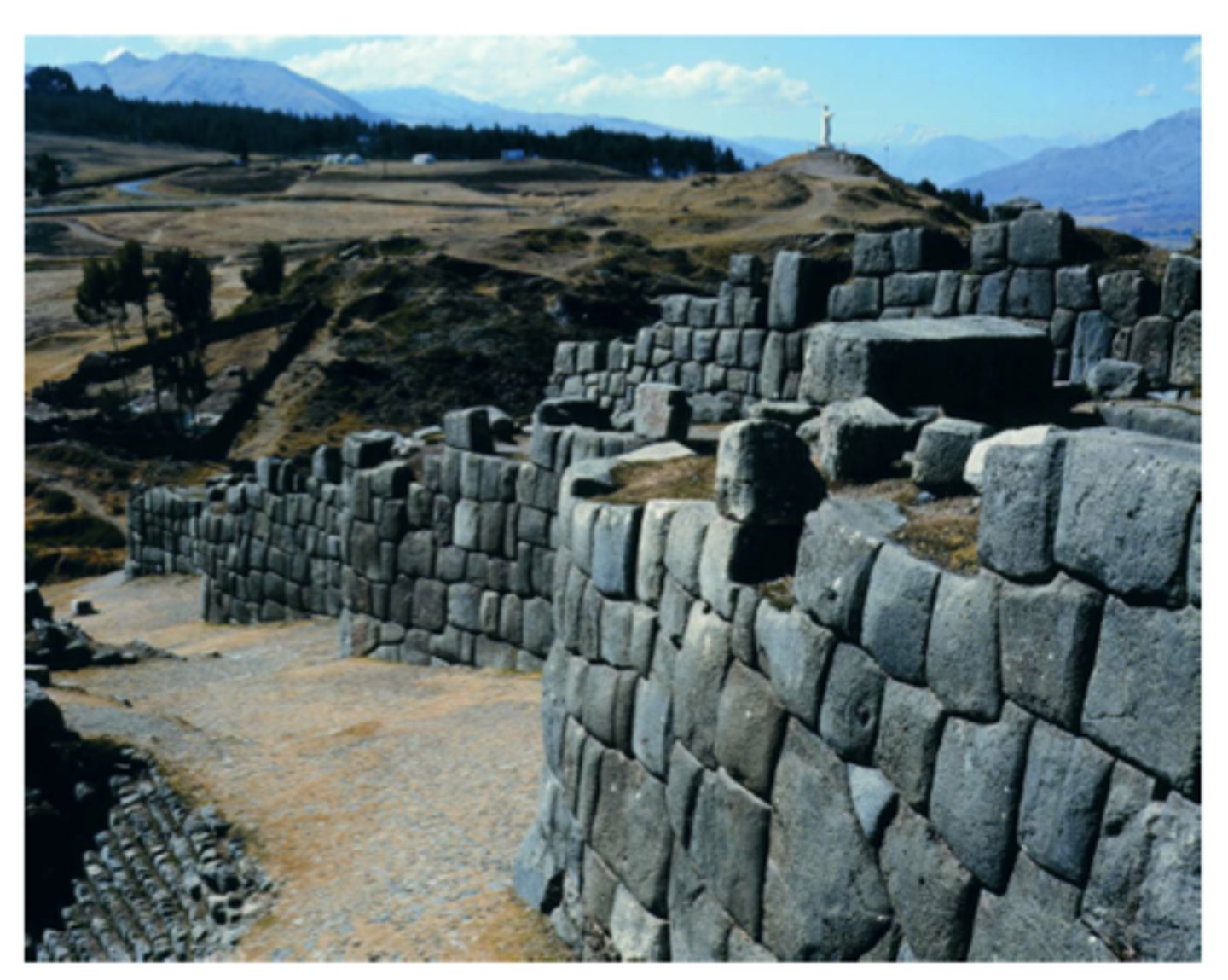
Maize cobs
c. 1440-1533 CE
sheet metal/repousse, metal alloys
Inka
-nature, small-scale object that was typical of Inca art
-life-sized and hollow
-found in the temple of Qorikancha
-indicates that maize/agriculture is integral in culture
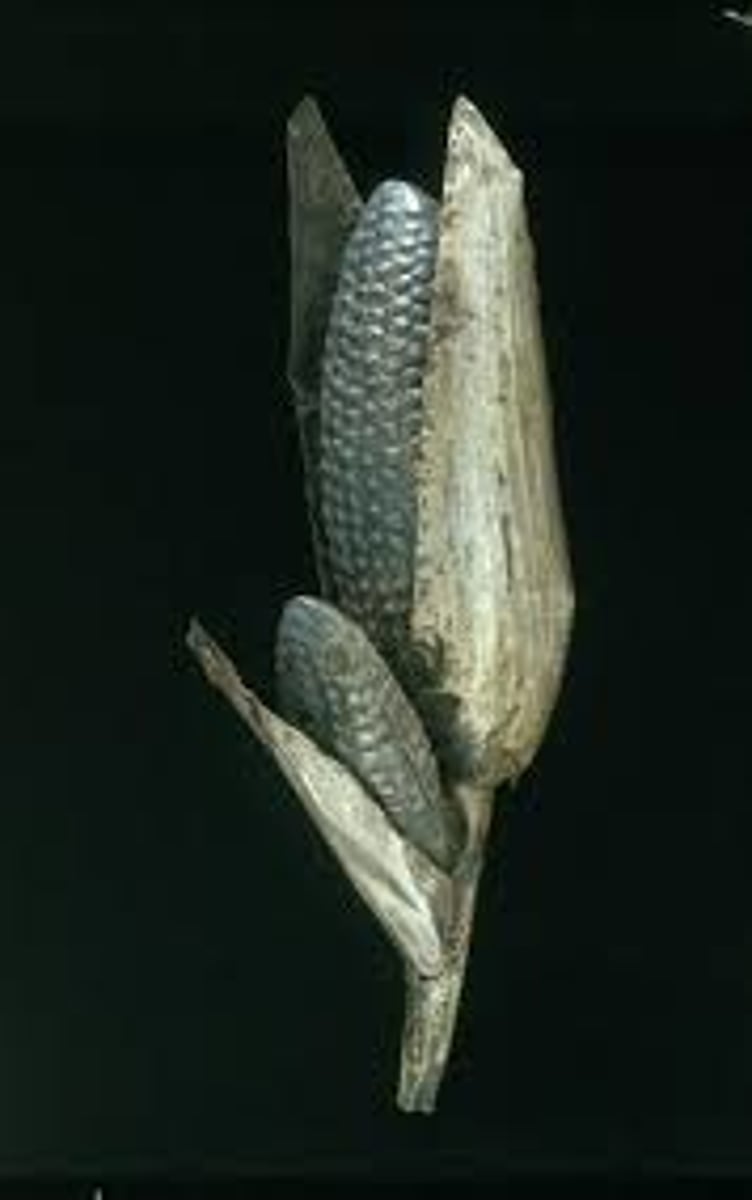
City of Machu Picchu
c. 1450-1540 CE
Granite (architectural complex)
Central highlands, Peru
Inka
-home for emperor and family so isolated from public
-granite architecture
-main features include terraces and stone water channels (these decrease erosion)
-doorways in trapezoid shape
-observatory at Machu Picchu: called the Temple of the Sun, Andes Mountains, windows aligned with solstice, and there is a cave located below the structure
-mostly a peaceful city
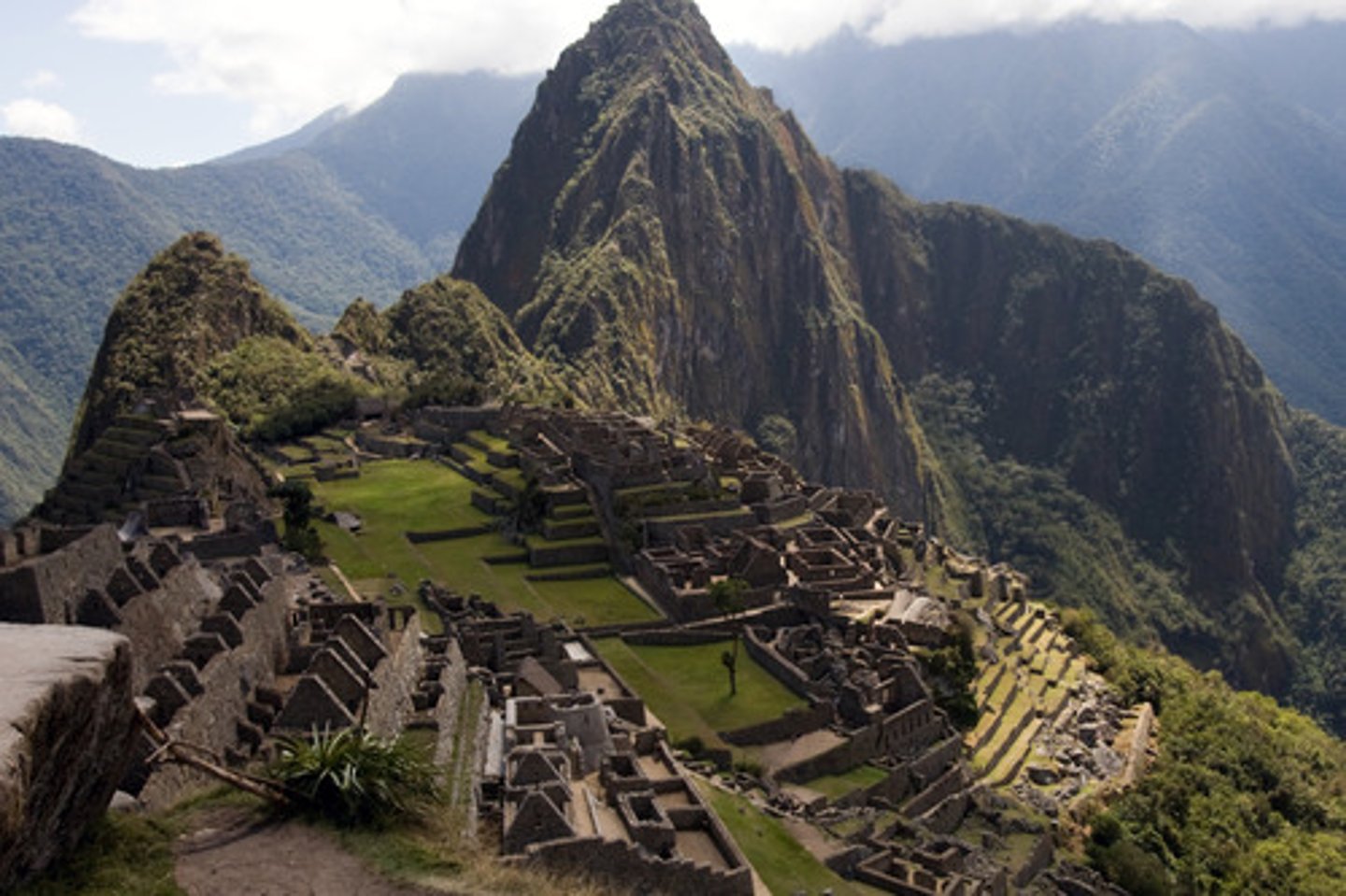
Intihuatana Stone (at City of Machu Picchu)
-located in observatory on platform
-shows emperor's dedication to the sun god Inti
-tracked the sun's movement throughout the year
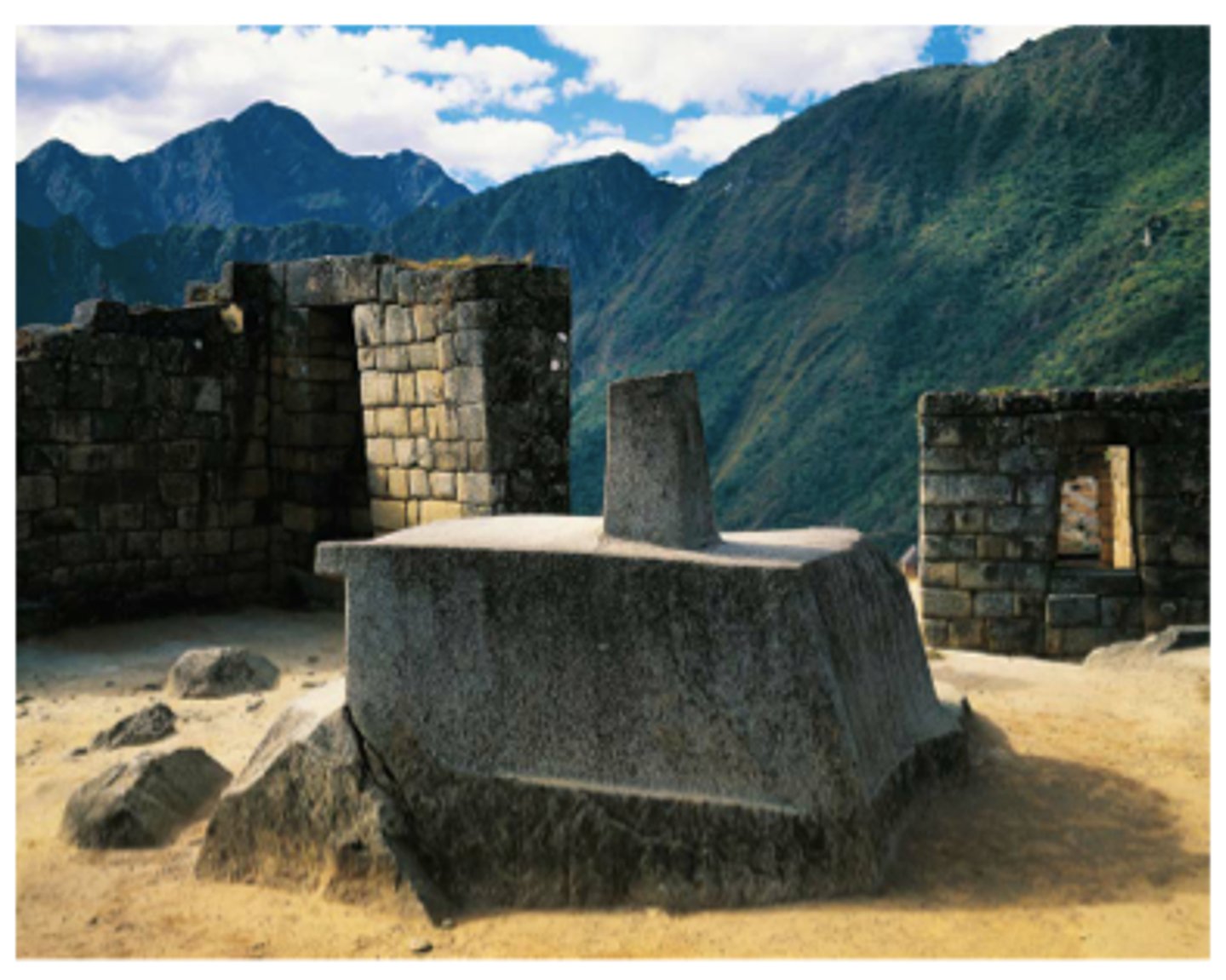
All-T'oqapu tunic
1450-1540 CE
Camelid fiber and cotton
Inka
-woven rectangle folded to be a square
-usually worn on shoulders
-made of Alpaca hair and made with the most expensive dye
-represents ethnicity, occupation, clan
-usually worn by the king
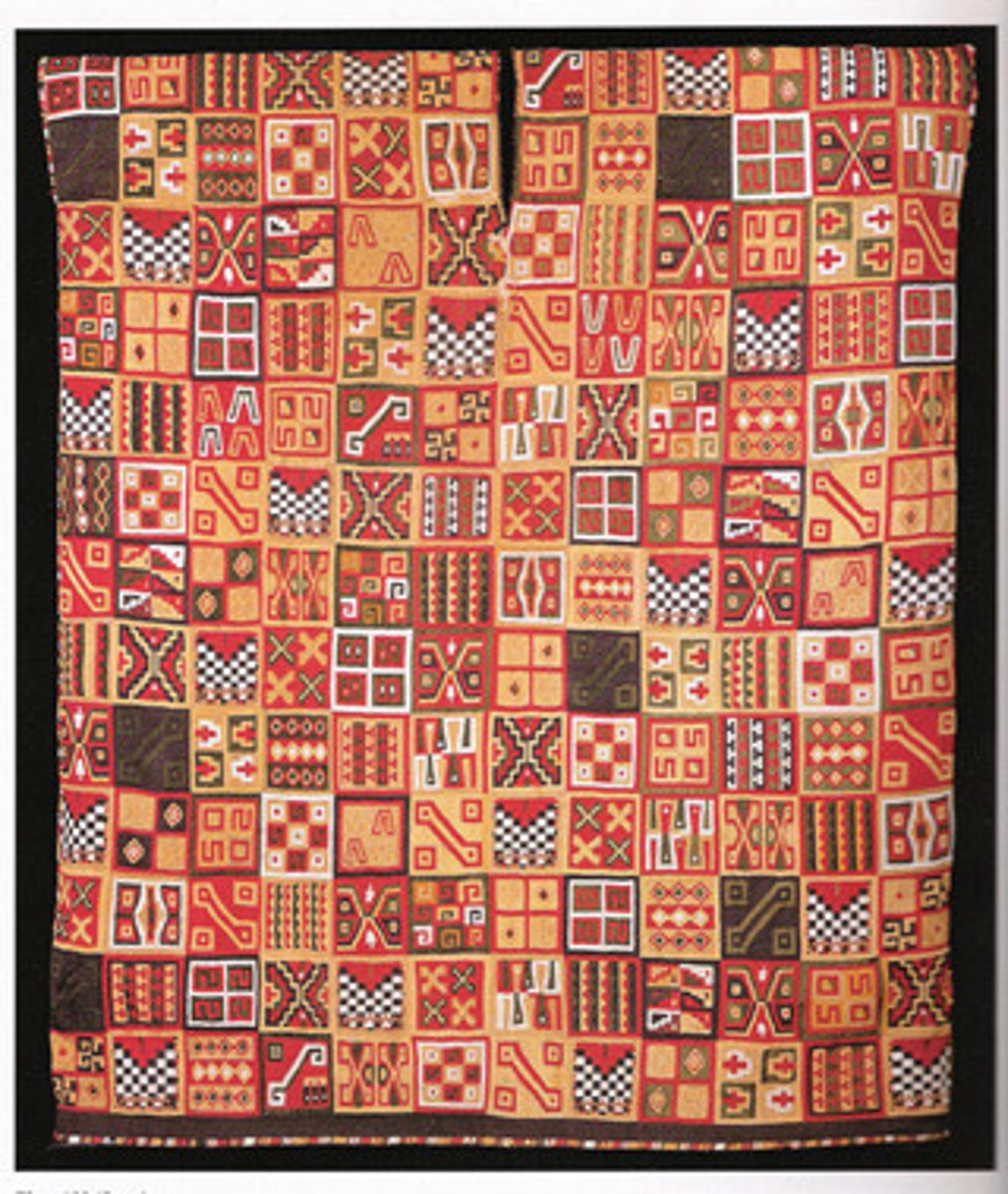
Bandolier bag
c. 1850 CE
Beadwork on leather
Lenape (Delaware tribe, Eastern Woodlands)
-based on bags carried by European soldiers to store ammunition cartridges
-women make these bags
-from the Delaware Tribe
-very vibrant colors
-intricate beadwork
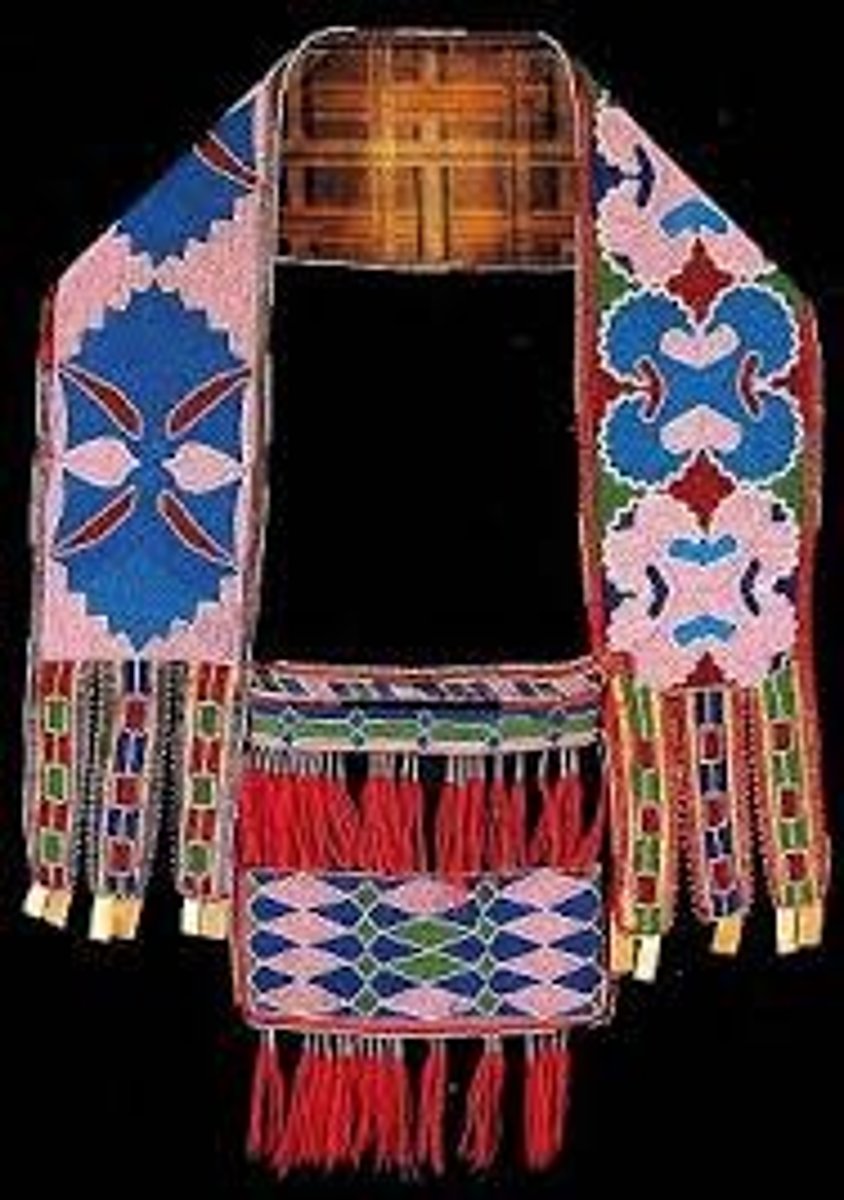
Transformation Mask
late 19th century CE
wood, paint, string
-manifest transformation usually an animal becoming another animal
-worn by dancers during ceremonies
-they pull strings to open and move the mask

Painted elk hide
c. 1890-1900 CE
painted elk hide
attributed to Cotsiogo
-tradition in Great Plains in US
-used to record history and celebrate battles
-includes Sacred Sun Dance and nonreligious Wolf Dance
-depicts daily activities (like men hunting)
-many animals such as buffaloes and horses
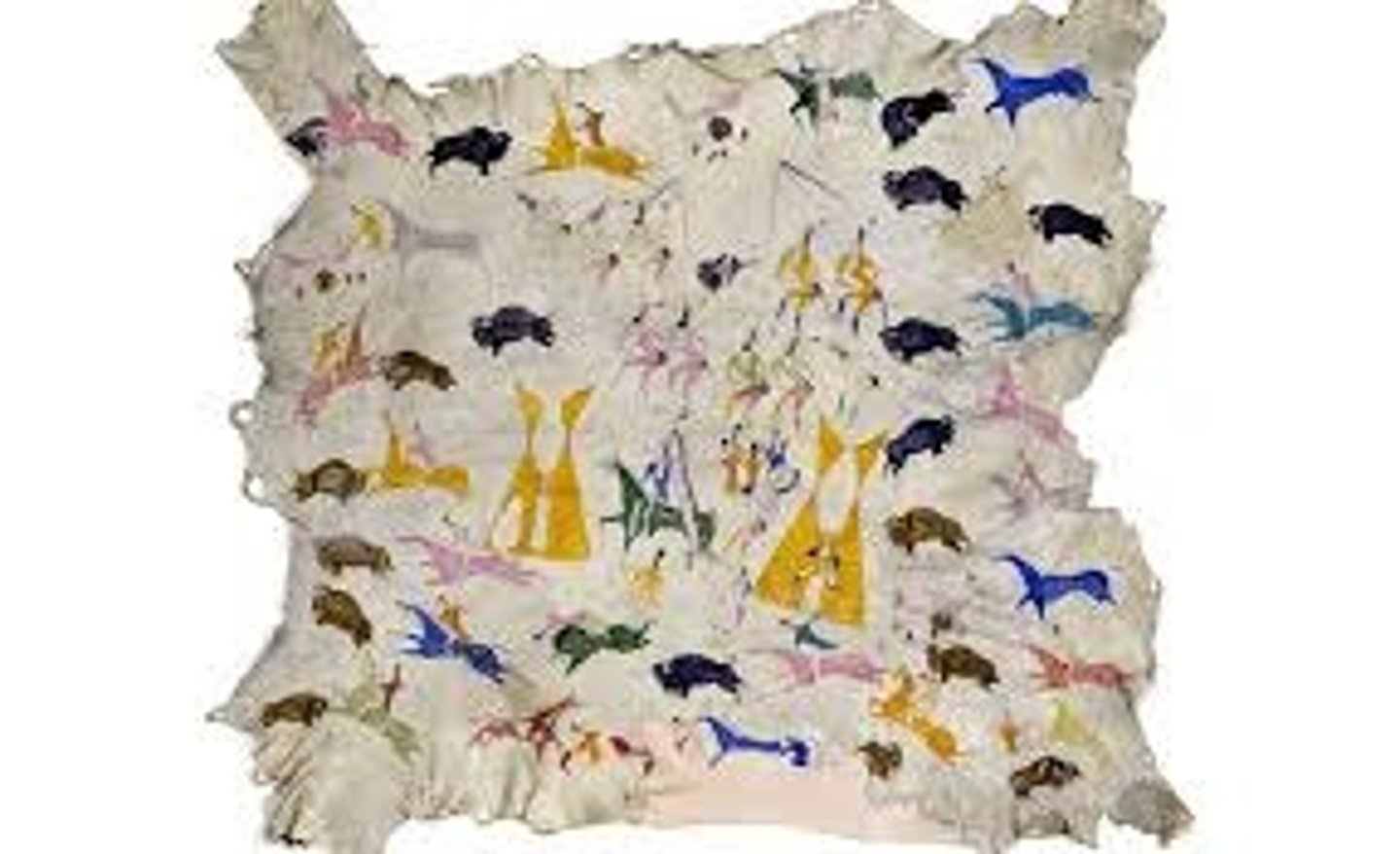
Black-on black ceramic vessel
Maria Martinez and Julian Martinez
mid-20th century CE
Blackware ceramic
Pueblo, New Mexico
-contemporary art
-created as something beautiful to look at rather than just as a utilitarian object
